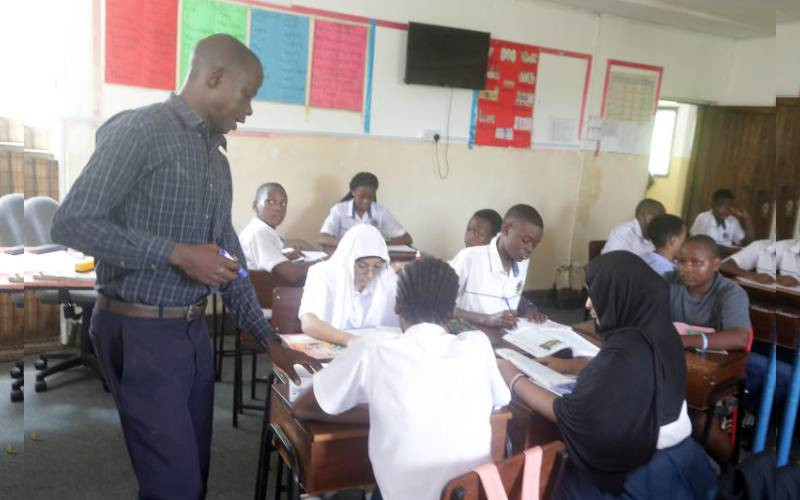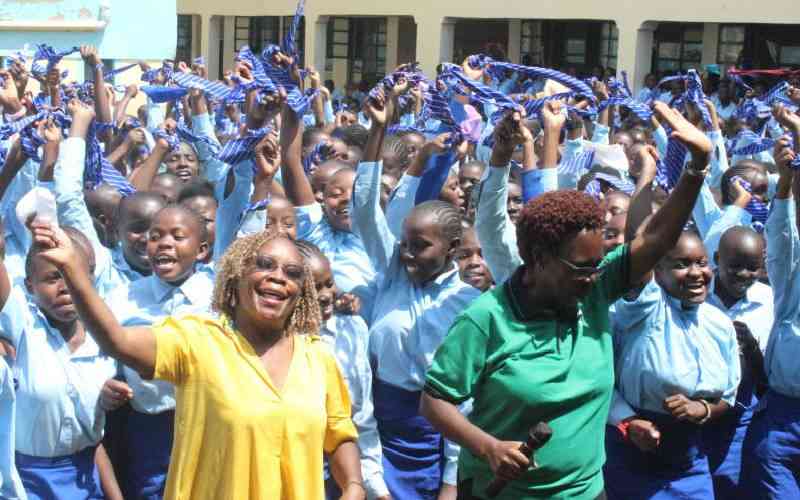By Rawlings Otieno
Kenya: A shocking report has lifted the lid on the extent of the rot in public primary schools where many Class Eight pupils can barely read or write.
The report by Uwezo Kenya also reveals that over 50 out of 100 children in Classes Four and Five can’t comprehend stories written for class two pupils.
Narok and Nairobi counties have the highest numbers of teacher absenteeism, confirming a recent World Bank report that many teachers in public primary schools are incompetent.
“Nationally, only three out of 10 children in Class Three can do Class Two work,” said the report.
According to Uwezo Kenya country coordinator, Dr John Mugo, a researcher, nine out of 100 children skip school on any given day, a trend that is similar to the research findings of 2011.The Uwezo Kenya assessment report shows that on average, learning outcomes are high in Nairobi and Counties in Central region and low in arid and Semi-arid counties.
A class three child in Kiambu County has a distinct advantage over those in Wajir, Garissa and Mandera counties.
Five out of 10 class three children in North Eastern region cannot do a class two level subtraction questions compared to two out of 10 in Nairobi and Central provinces.
The countrywide survey further reported that 21 out of 100 children in classes six and seven couldn’t understand a class two level story even when they could read it.
Boys lag behind girls in basic competency acquisition with exception of North Eastern where boys lag behind the girls up to five times in most counties. The findings found that school age children are not acquiring basic competencies in literacy and numeracy at the right age or grades.
Simple maths
It was also found that private schools do more teaching and offer better learning than public schools.
The most worrying trend according to the report shows that nearly all the children in classes six to eight cannot tell the meaning of colours of the national flag.
“More than 20 per cent of learners in classes six to eight can tell the meaning of the colours in the Kenyan flag, but they can’t explain the meaning of the colours,” said Mugo, while releasing the snippets of the report.
Kisumu, Tina River, Turkana, Siaya, Garissa and Samburu counties have the lowest average of children in class three who can read a story and do a division of simple maths for class two.
Stay informed. Subscribe to our newsletter
The study conducted by testing over 153,000 children across Kenya’s 47 counties, shows that by class five, 33 per of the children cannot read and understand simple class two English stories, or hadith in Kiswahili.
A class three child in Nairobi Province is twice as likely to read a class two level paragraph than a child in the same class in Western Province.
Girls are better readers than boys in Kiswahili nationally, except in arid areas of Wajir, Garissa, Tina River and Mandera.
The report also shows that seven out of 100 class eight children cannot read a class two level Kiswahili story.
The findings also established that 11 out of 100 pupils in class eight couldn’t do a simple class two math while seven out of 100 of them couldn’t read a simple English or a Kiswahili story.
Teacher absenteeism
Less than half of class three children in Western, Nyanza and Eastern Regions can read a class two level paragraph, with a class three child in Nairobi having twice as much chances of reading a class two level paragraph than a child in the same class in Western region.
But the report suggests that teacher absenteeism is still very high and could be a reason why learning levels in numeracy, literacy and general knowledge is worsening.
On average 10 per cent of teachers are not in school on any given day, with teacher absenteeism highest in Narok at 21 per cent followed closely by Nairobi at 17 per cent.
In all classes, more boys than girls are absent, but children in lower primary are two times more likely to be absent from school than those in the upper primary school.
Sharing books
Despite the continued investment in free primary education, the textbook ratio seems to be worsening. With Kiswahili for instance, the learner textbook ratio shifted from two children sharing a book in 2009, to three children per book last year.
On class size and attendance, the report shows that the average number of pupils in classes one to eight is 64, which is higher than the 40 recommended by the Ministry of Education.
The report also paints a grim picture of infrastructure available to learners. It established that nearly all children in Nairobi and Central Province sit on desks whereas half of their peers in North Eastern sit on the floor, as do those in parts of Kitui, West Pokot and parts of Coast, Nyanza, Eastern and Western provinces.
Children in public schools also continue to lack basic facilities, including toilets, clean drinking water and sanitary towels, with only four out of 10 schools providing sanitary towels to the young ladies.
National average
And before the Jubilee government starts the implementation of the laptop project, Uwezo Kenya has found out that about one in 10 schools in Kenya have at least one computer.
However, of these, only five out of 10 schools use them for learning purposes, with just one out of the same number of schools having an email address. The report further revealed while learning levels in Mombasa and Nairobi counties are higher than the national average, they had dropped significantly compared to 2011.
In Narok County, learning levels in Trans Mara dropped dramatically with only one in every three pupils being able to read a Kiswahili and English paragraph.
However, in Siaya County, learning levels were way below the national level with four out of ten children in class three being able to read a Kiswahili and English paragraph compared to five out of ten pupils nationally.
 The Standard Group Plc is a
multi-media organization with investments in media platforms spanning newspaper
print operations, television, radio broadcasting, digital and online services. The
Standard Group is recognized as a leading multi-media house in Kenya with a key
influence in matters of national and international interest.
The Standard Group Plc is a
multi-media organization with investments in media platforms spanning newspaper
print operations, television, radio broadcasting, digital and online services. The
Standard Group is recognized as a leading multi-media house in Kenya with a key
influence in matters of national and international interest.
 The Standard Group Plc is a
multi-media organization with investments in media platforms spanning newspaper
print operations, television, radio broadcasting, digital and online services. The
Standard Group is recognized as a leading multi-media house in Kenya with a key
influence in matters of national and international interest.
The Standard Group Plc is a
multi-media organization with investments in media platforms spanning newspaper
print operations, television, radio broadcasting, digital and online services. The
Standard Group is recognized as a leading multi-media house in Kenya with a key
influence in matters of national and international interest.









